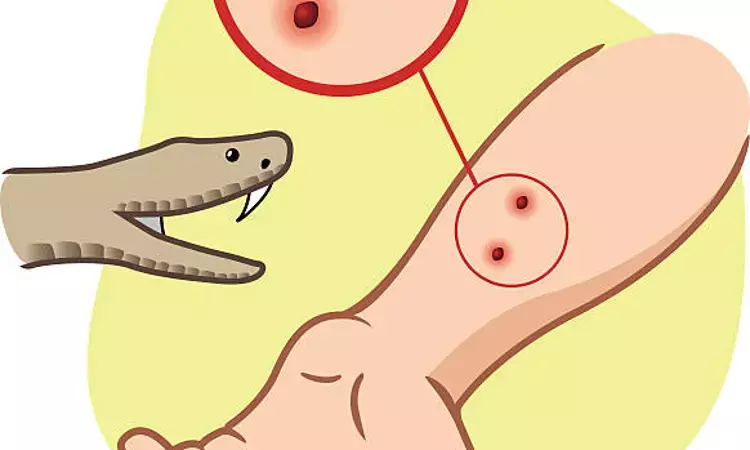- Home
- Medical news & Guidelines
- Anesthesiology
- Cardiology and CTVS
- Critical Care
- Dentistry
- Dermatology
- Diabetes and Endocrinology
- ENT
- Gastroenterology
- Medicine
- Nephrology
- Neurology
- Obstretics-Gynaecology
- Oncology
- Ophthalmology
- Orthopaedics
- Pediatrics-Neonatology
- Psychiatry
- Pulmonology
- Radiology
- Surgery
- Urology
- Laboratory Medicine
- Diet
- Nursing
- Paramedical
- Physiotherapy
- Health news
- Fact Check
- Bone Health Fact Check
- Brain Health Fact Check
- Cancer Related Fact Check
- Child Care Fact Check
- Dental and oral health fact check
- Diabetes and metabolic health fact check
- Diet and Nutrition Fact Check
- Eye and ENT Care Fact Check
- Fitness fact check
- Gut health fact check
- Heart health fact check
- Kidney health fact check
- Medical education fact check
- Men's health fact check
- Respiratory fact check
- Skin and hair care fact check
- Vaccine and Immunization fact check
- Women's health fact check
- AYUSH
- State News
- Andaman and Nicobar Islands
- Andhra Pradesh
- Arunachal Pradesh
- Assam
- Bihar
- Chandigarh
- Chattisgarh
- Dadra and Nagar Haveli
- Daman and Diu
- Delhi
- Goa
- Gujarat
- Haryana
- Himachal Pradesh
- Jammu & Kashmir
- Jharkhand
- Karnataka
- Kerala
- Ladakh
- Lakshadweep
- Madhya Pradesh
- Maharashtra
- Manipur
- Meghalaya
- Mizoram
- Nagaland
- Odisha
- Puducherry
- Punjab
- Rajasthan
- Sikkim
- Tamil Nadu
- Telangana
- Tripura
- Uttar Pradesh
- Uttrakhand
- West Bengal
- Medical Education
- Industry
Rare Case of Septic Arthritis of PIP Joint After Rattlesnake Bite: a report

Fort Sam Houston, TX: In a patient treated by Daniel Gelman et al, a retained rattlesnake fang was found in association with a septic interphalangeal joint despite appropriate radiographic evaluation and thorough surgical irrigation and debridement upon initial presentation.
Snake bites are an uncommon injury requiring intervention by hand surgeons. While counteracting the effects of snake venom is the initial and urgent concern following a bite, infection caused by retention of a foreign body can present in a delayed fashion and may lead to increased morbidity. Standard radiographs of the injury should be carefully examined for foreign bodies, noting that retained snake teeth are somewhat radiolucent due to less mineralization as compared to bone and can be difficult to visualize.
The patient was a 69-year-old, right hand-dominant man who sustained a rattlesnake bite to the dorsal and volar aspects of his left ring finger adjacent to the proximal interphalangeal joint (PIPJ). He initially presented from an outside hospital, where Crotalidae Polyvalent Immune Fab antivenin was administered prior to transfer to the treating hospital.
Plain radiographs of his left hand were obtained, at which time a chronic tuft fracture of the same digit was the only abnormality identified. The wound was irrigated, placed in a clean dressing, and splinted, and the patient was admitted to the Intensive Care Unit for observation and continued management with antivenin.
Over the first 24 hours of admission, the patient developed worsening pain, edema, and erythema beyond the dorsal and volar wounds. Examination evolved to include resting flexion, fusiform swelling, tenderness along the tendon sheath, pain with passive stretch of his ring finger, and a clinical picture concerning for flexor tenosynovitis.
Given these findings, the subject underwent irrigation and debridement by the on-call team with a focus on the volar wounds, including the flexor tendon sheath, but also the dorsal wound immediately proximal to the PIPJ, which was later identified as having the retained fang. The wounds were sharply extended for a thorough debridement, which revealed hemorrhagic tissue without frank purulence. No foreign bodies were identified in either wound. The subject recovered and was discharged with resolution of symptoms and asked to follow-up in 1 week.
The patient presented to the hand surgery clinic 3 weeks after his index surgery with increased swelling, erythema, and active purulent discharge from his dorsal incision. Repeat radiographs demonstrated a retained foreign body dorsal to the left ring finger PIPJ, with local osteolysis suggestive of septic arthritis. He was admitted for repeat irrigation and debridement. The rattlesnake fang was identified and removed.
Intraoperative cultures grew Pseudomonas aeruginosa and Klebsiella aerogenes. The patient was subsequently treated with intravenous piperacillin and tazobactam and transitioned to oral levofloxacin for 6 weeks. He returned for a 3-month follow-up with complete resolution of infection and pain, but decreased range of motion of the ring finger.
The authors mentioned that - This case report highlights a potential complication of snake bites, the importance of aggressive management, and the importance of increased suspicion for retained foreign bodies. Augmenting plain radiographs with additional imaging modalities, such as ultrasound, dark-field, and phase-contrast imaging, may aid in the diagnosis of retained foreign bodies after snake bites.
Further reading:
Septic Arthritis of the Proximal Interphalangeal Joint After Rattlesnake Bite
Daniel Gelman, Taylor Bates, Julia A. V. Nuelle, MD
J Hand Surg Am. r Vol. 47, May 2022
https://doi.org/10.1016/j.jhsa.2021.04.004
MBBS, Dip. Ortho, DNB ortho, MNAMS
Dr Supreeth D R (MBBS, Dip. Ortho, DNB ortho, MNAMS) is a practicing orthopedician with interest in medical research and publishing articles. He completed MBBS from mysore medical college, dip ortho from Trivandrum medical college and sec. DNB from Manipal Hospital, Bengaluru. He has expirence of 7years in the field of orthopedics. He has presented scientific papers & posters in various state, national and international conferences. His interest in writing articles lead the way to join medical dialogues. He can be contacted at editorial@medicaldialogues.in.
Dr Kamal Kant Kohli-MBBS, DTCD- a chest specialist with more than 30 years of practice and a flair for writing clinical articles, Dr Kamal Kant Kohli joined Medical Dialogues as a Chief Editor of Medical News. Besides writing articles, as an editor, he proofreads and verifies all the medical content published on Medical Dialogues including those coming from journals, studies,medical conferences,guidelines etc. Email: drkohli@medicaldialogues.in. Contact no. 011-43720751


